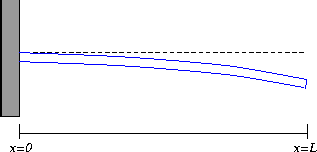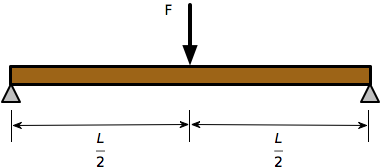Stripper
Stripper (noun) - A person or thing that breaks something into strips
Hello newcomer, welcome to my thesis project - Stripper.
===
Stripper is a package used to analyse deflection, stresses and buckling modes of beams. In mathematical terms it is a model based on the Finite Strip Method (FSM) developed by Y. K. Cheung in 1976.
How it works :
- User makes a model by specifying its length, boundary conditions and amount of Fourier terms (more on these later).
- User makes a cross-section for the model by specifying node coordinates and lines (strips) between nodes.
- User adds loads to the model.
- The model is analysed and the deflection at each node is returned.
Model :
A model consists of a cross-section , boundary-conditions and a length.
Cross-section :
A cross section consists of Nodes and lines connecting these nodes called Strips.
A typical Cross-section consisting of 4 Nodes and 3 Strips :
O+++++++++++++++O
+
+
+
+
+
O+++++++++++++++O
O = Node
+++ = Strip
A Model with the above cross section and a length would look like this:

Boundary conditions :
Boundary conditions represent the condtions at the ends of the beam. The end of a beam may be Simply-Supported (S), Clamped (C) or Free(F).
For example: The boundary conditions of a beam with both ends Clamped would be denoted as (C-C), and in the case of one end clamped and the other free - (C-F)
What is meant by Clamped, Free and simply supported?
The left end of this beam is clamped while the right is free (C-F) :

Both ends of this beam are simply-supported (S-S) :

Fourier series :
In FSM the boundary condtions of a model is determined by its Fourier series.
Take the following Fourier series on the domain y=0 to y=a as an example:
Y(y) = sin(u.y/a) , (u = pi, 2.pi,3.pi, ... , m.pi)
This Fourier series has 2 characteristics worth mentioning:
- The value of all terms are zero at y=0 and y=a.
- The first derivative is non-zero at y=0 and y=a.
In fact it represents all possible bending shapes of a beam that is simply-supported at both ends!
- The deflection can only be zero at both ends.
- The rotation is non-zero at both ends.
So: By choosing a Fourier series with the correct shape we choose our boundary conditions.